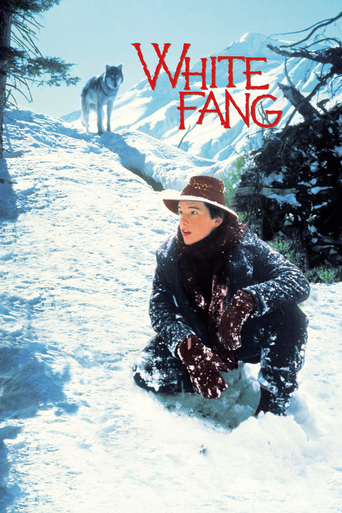


An emotional person often dreams about/craves for a life that's allows him to stay with his dear ones forever, without being forced to move on. The movie fulfills this desire.A glimpse of the harsh Nature, surreal panoramas of mountains, rivers etc., the abhorrent human tendencies and innocence and love struggling to survive their unending ordeals are captivating. The boat trips by Alex and Jack, their visit to the Indian village which is calm and content, eating and sleeping under the open sky, the wood house by the river. The dog fighting not only devastates but also infuriates, the misanthropist was rising ! The way Beauty Smith vexes and starves White Fang leaves heartbroken.Bart, The Bear and Jed have played their roles impeccably. Yes, there are several moments that are unconvincing e.g: The bear retreats when a wolfdog gets enraged.The fatherly Alex and the teenager, dreamer and emotionally impulsive Jack touch your hearts. The eventual maturing of Jack is depicted lovably in the movie - steadily befriending White Fang, driving him away for his own good. Alex who is initially uncomfortable with Jack but later own takes a liking for the boy - he gradually opens up and stays with Jack to assist him realize the dream of the gold mine. Jack, as an emotionally attached and honest person, enlists Alex as a partner in the mine, while reading this, a slight smile and good feel reflects on his face. When at the eleventh hour, Jack decides to stay back, Alex smiles lightly, acknowledging in a fatherly way, the feelings of a young boy. I often hate unrealistic endings, even if happy, however, there are times when you wish to shun the logic and pray for a happy end.The background score suits the moods of the movie, the cinematography is memorable.To summarize, it's an emotional journey, emotions that neither understand nor care about the rational or the practical world.
... View MoreI remember I read the book when I was a kid and I liked it very much. Now that i've seen the film I clearly remembered some of the events from the book (like the last stand in the woods against the hungry wolfs or the dog fights in the town). The ending was definitely different in the book, although i can't remember exactly how it was.This is a pretty good film. I especially liked the nature scenes and the superb Alaskan landscapes, but also the relationship between the boy and his dog/wolf friend. It does have a few boring scenes (involving small talk between humans), but since it's not a very long movie it shouldn't be a problem.
... View MoreAs a film in itself, it's not bad. The story portrayed in the film follows the classic example of an animal film.But as an adaptation of the book by Jack London,it leaves much to be desired. Key areas are missed out entirely, or shrunk to a minor aspect of the film. While some of the original feel of the book is preserved, the relationship between Jack and White Fang is stretched out for the entire film, whilst in the book it only comes about in the last 1/4 of the book. The scenes with Beauty Smith when White Fang acts as a fighting dog are some of the few that remain true to the book.White Fang's early life is completely different to the book, his life with Grey Beaver is not shown or referenced at all, except for a few minutes of screen time.The battle between Beauty Smith's gang, and Jack and Alex, seems to have been completely invented by the script writers. The ending in the film likewise also seems to be made up.If you have read the book, I wouldn't watch it and expect great things.
... View MoreWhen I saw this movie, I thought that this would definitely not be as good as the novel by Jack London. The book White Fang was amazing, and a fantastic book. Well, this was not as good as the book, and it was not close to it at all. Still, this was a great movie, but like I said in my summary, I like Iron Will just a bit better.The acting was very well-done to tell you the truth. You could actually believe the actors. The direction was also very good. Some scenes could be beautiful, some scenes could be gritty. Unfortunately, like all of these family movies, some scenes could be cheesy, and there was a handful of scenes that were cheesy. Still, with all of these pros and just a couple cons, this is a fantastic movie that the whole family can enjoy.7/10 Recommended Films: Iron Will.
... View More